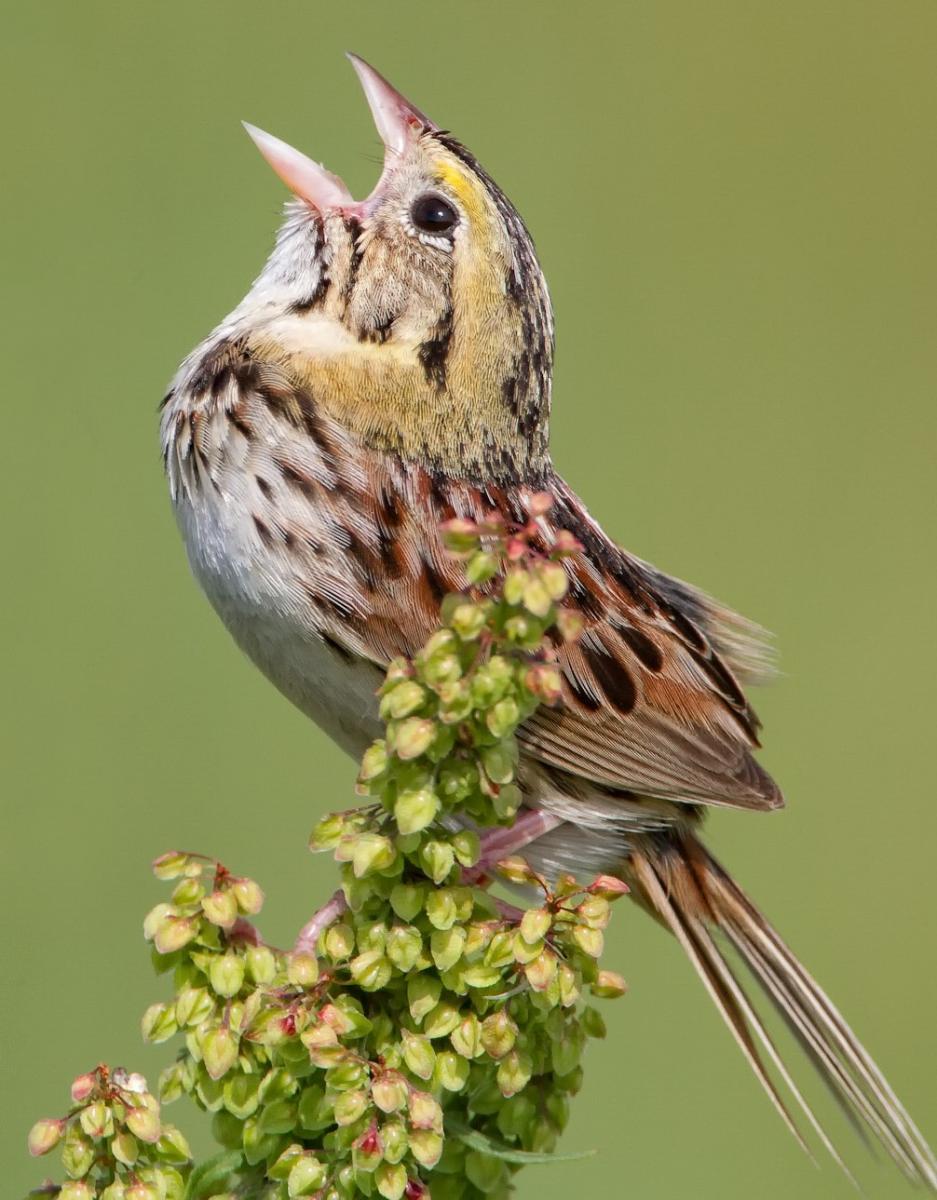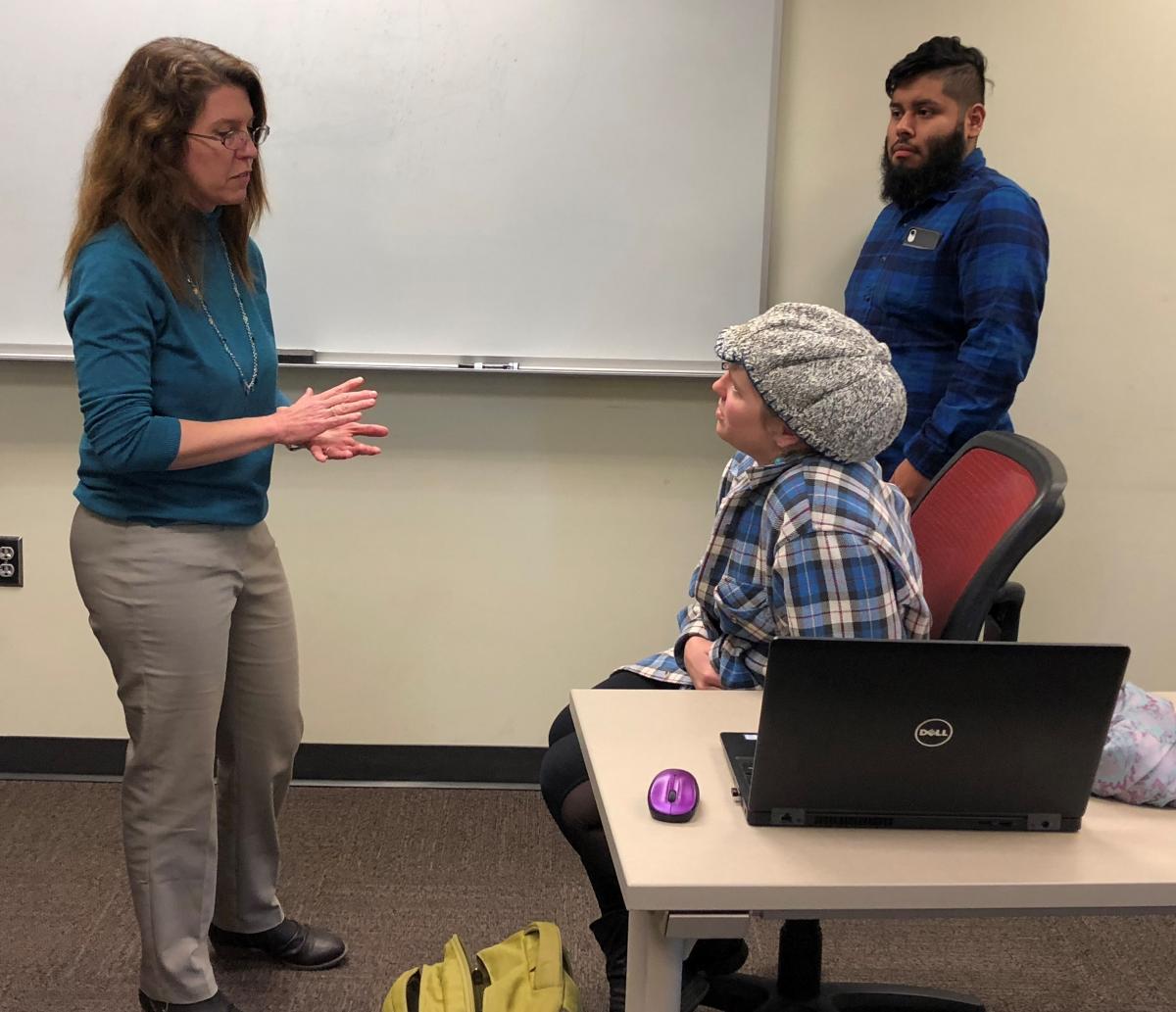Kristal Stoner, executive director of Audubon Nebraska, recently spoke to NRT students about the stance the National Audubon Society takes on climate change and the importance of birds to that.
She said she has found, in her talks at libraries and other community places, people are more receptive to talks about climate change when birds are part of the conversation.

“When I meet with people, I always have this random person who says, ‘My grandma, she was an Auduboner,’ and that’s great,” Stone said. “It means they’re already a part of our story and they’re already somebody I can reach out to and say, ‘That’s great. I’m so glad that your grandmother fed birds, but right now, we have a climate change problem, and I need you to be part of the solution.’ So, birds are the hook to get people in.”
Stoner uses the National Audubon Society report, “Survival by Degrees: 389 Bird Species on the Brink,” and other research findings and tools to show people how the climate is changing and harming birds.
“I use these visuals to explain to folks that climate change is real and that we are part of the problem,” Stoner said.
The idea behind climate change is that carbon dioxide emitted by the ocean, animals and plants can usually also be offset by nature, but human actions such as burning fossil fuels release extra carbon into the atmosphere, creating greenhouse gases. These gases absorb radiation and raise temperatures.
The society’s recently released report includes a tool, the Birds and Climate Visualizer, which projects how an increase in temperature by 3°C could lead to the extinction of 389 bird species. The tool indicates how much better off bird species will be if people are able to stabilize carbon emissions and hold temperatures to 1.5°C above preindustrial levels.
“This is designed to be science but packaged in a way for an advocacy tool to show you that we can do something,” Stoner said. “It’s not all doom and gloom. We can make a difference.”
She said capping carbon emissions is everybody’s responsibility and individuals can help by carpooling, buying locally produced foods and improving the energy efficiency of their homes through actions such as wrapping heat ducts and using energy-efficient appliances. They should also write or call their state senators, she said, and the National Audubon Society will train members in better approaches to this.
“If you go and talk to senators, ‘We need to stop climate change,’ they may not listen, depending upon who they are, but if you say, ‘We don’t want to depend upon another state for our energy; we want homegrown energy,’ that resonates,” she said.
She spoke about tailoring advocacy messages to meet people where they are.
“We don’t have to talk about the problem,” she said. “If we agree on the answer, that’s fine. Let’s just do something about it.”
One thing she said Audubon Nebraska is hoping to do about excess carbon is sequester it in the soil.
“The idea is that the more carbon that we can capture, so it’s not floating around in the atmosphere, storing it in an organic way below the soil is what we need and want,” she said.
Nebraska could use its grasslands as a carbon market, similar to the way other states are using their forests for this, she said.
“If we start talking about carbon in our grasslands as a solution for the nation, think about our agriculture ecosystem or our agriculture system generally speaking, how landowners are going to respond if they get paid to have grass, right?” she said. “That’s a game changer, and that’s a real thing.”
She said the National Audubon Society is already receiving calls from corporations wanting to invest in landowners who are using their grasslands to offset extra carbon. How landowners are approached about this may require savvy, she said.
“I’m not going to go talk to the landowner about taking something out of production and putting it into grass, but when the investor comes to them and says, ‘I will pay you to do that because I need to set off my carbon offset,’ that’s a better way to go about that,” Stoner said.
Audubon’s current conservation ranching program, a collaboration of several Audubon societies, including Audubon Nebraska, has more than two million acres enrolled across the United States. Landowners taking part in this program commit to actions, such as removing invasive red cedars with prescribed burns, to benefit bird habitats, Stoner said.
A newer aspect of the conservation program involves Audubon certification seals for placement on meat packaging. These stickers certify that the beef has been sustainably raised on grasslands that benefit wildlife habitat.
Stoner said when she first heard about the seals, she had doubts whether they would take off in Nebraska but, before the program even got off the ground, she changed her mind.
“We had the sellers calling to say, ‘I want your product,’ before we had it, so the market is clearly there,” she said.

She recently met up with the policy advisor of the Nebraska Cattlemen as a strategy to find commonalities on the issues of climate change and bird conservation.
“If I can join up and find overlap in terms of mission of what we’re trying to accomplish with one of those stakeholders, that’s the best way to reach those individuals,” Stoner said.
In all of her communications to others, she said she tries to use local science.
“We should always stand on the best available science, but I use local science whenever possible,” Stone said. “So, I can talk about things that are happening outside Nebraska, but you can make it tangible and real if you can pull things that are from right here. That’s what resonates with people.”
Besides using the National Audubon Society’s “Survival by Degrees” report at local presentations, Stoner uses a University of Nebraska-Lincoln report, Understanding and Assessing Climate Change: Implications for Nebraska, USDA maps that have changed in their recommendations to homeowners about what plants to plant in their yard, discussion of the 2012 drought in Nebraska and changing range maps of bird species to point out climate change and its repercussions.
She told the NRT students that she is seeking research showing how much carbon grasslands can sequester and research answering why grassland birds are not shifting their range in response to climate change the way other birds are.
“I do need the research that folks like you are presenting,” she said.
She also encouraged students that the National Audubon Society offers the public many ways to become involved, from running bird surveys and working on bird habitats to lobbying politicians.
Membership in the society and donations to it have risen since the society took a stronger advocacy stance about 10 years ago, Stoner said, and she credits birds for their part in that.
“People are drawn to birds,” she said. “They see birds. They acknowledge they’re part of the environment. So, to me, that is the best hook to engage the people that we need to so that we can do good conservation work. Not everybody is going to be the scientist doing the work; we also need the public to care about what we’re doing. Birds are a fantastic hook to do that.”
— Ronica Stromberg, National Research Traineeship Program Coordinator


